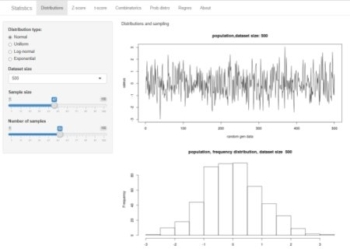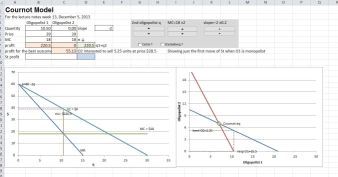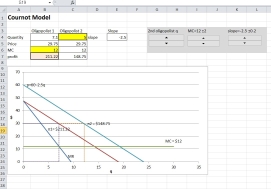Martin's research and teaching site
Welcome to this peronal site. My name is Martins Priede.
I graduated from Yokohama National University with a PhD degree in Economics in 2010. Before YNU, I studied at the International University of Japan and obtained a master's degree in International Relations in 2002. I also have been an Erasmus exchange student in the Finance and Banking master's program at the University of Birmingham, UK.

My research interests in economics encompass a broad range of topics, including foreign direct investments, international trade, multinational companies, and regional economies. I am particularly fascinated by how global economic policies impact local economies and the strategic decisions of multinational firms. This includes examining the effects of trade agreements, investment flows, and economic integration on different regions.
In addition to my core interests, I am interested in big data and its application in financial research. My focus includes exploring new financial instruments and innovative data analytics techniques. I utilize logit methods extensively to model economic behaviors and outcomes, and I am also dedicated to advancing the field of discrete choice modeling. These methodologies help in understanding consumer preferences, market dynamics, and the implications of policy changes on economic activities.
My professional experience spans several countries, including China, Vietnam, Estonia, and Finland. These diverse experiences have enriched my understanding of international economics and allowed me to contribute to various research projects and teaching assignments. I am actively involved in teaching economics and management-related subjects, where I strive to convey complex economic concepts in an engaging and accessible manner to students from diverse backgrounds.
Research
Selection of unplublished and published research:
Working papers/unpublished research:
Bilateral trade structure and possible impacts of Canada – EU trade agreement
This research will look at the possible effects of the upcoming Comprehensive Economic and Trade Agreement (CETA) between Canada and the European Union. Although Canada and the EU have been part of regional trade arrangements for a long time, the trans-Atlantic linkage of these advanced economies can provide an additional boost to their economies during times of economic stagnation. By using detailed trade data at the HS02 commodity classification level, this paper examines the trade structure, bilateral trade dependence, trade intensity, and export similarities between the two economies. We also estimate export sophistication by computing unit values of the product groups, which gives an idea of the depth of the bilateral trade. It is assumed that the successful conclusion and implementation of the Canada-EU CETA will serve as a test case before negotiating a much larger-scale US-EU Transatlantic FTA.
Spatial analysis of investment locations: Do national borders matter? The case of Japanese multinational companies in the European Union
This paper empirically analyzes the location choices of Japanese multinational companies in the EU. Using a sample of 1023 Japanese investments, conditional logit and two-level nested logit models are estimated across 18 countries and 236 regional locations from 1995 to 2004. The regions are grouped and estimated in three different structures. The nested logit results, when regions are grouped by country nest, show that investors do not select a particular country before choosing the region within it; instead, they select the wider geographical area and later choose the region within it without being significantly influenced by country borders.
Published research:
Location choice network patterns of Japanese multinational companies in Europe
This research investigates the network patterns of location choice for multinational companies using the multinomial logit method. It empirically analyzes regional economic factors that have been significant in attracting investments from Japanese companies over the past decade, utilizing the most detailed regional data available. In addition to previous studies, this paper particularly focuses on the factors that follower Japanese companies consider important in their investment decisions. Japanese multinational companies may choose to locate near other already established companies from the same country for reasons such as following their business customers or leveraging existing intra-firm linkages established in Japan.
The paper has three main objectives. Firstly, it analyzes the significant regional economic factors that follower Japanese companies consider important when choosing regions with already established Japanese firms. Secondly, it examines the regional economic factors that are significant for companies that choose to locate near hubs of Japanese companies. Thirdly, by considering the distances between regional centers, the paper aims to establish the significance of physical distance in the establishment of Japanese company hubs. The hypothesis of this paper is that Japanese companies disregard geographical distance in their investment decisions as they rely on the network of Japanese companies.
Presentation slides in PDF format
Location Choice of Japanese Multinational Companies in Europe: Regional Analysis
M Priede - 横浜国際社会科学研究, 2010
This paper empirically investigates the main determinants of location choice for Japanese multinational companies in 27 European Union and 4 EFTA countries, utilizing newly available European regional data from the years 1995 to 2005. The regression analysis considers factors such as market potential, availability and quality of human resources, real estate costs, infrastructure and networks, industry concentration, and direct air transport links with Japan.
The estimation results reveal that the location strategies of Japanese manufacturing and non-manufacturing companies differ, as predicted by theories of multinational companies. The availability of qualified personnel working in science and technology is among the chief factors influencing location choices by Japanese companies.
Non-manufacturing companies are attracted to industrially diversified regions with high income, whereas manufacturing companies are interested in regions with lower wages but larger populations. Japanese companies investing in manufacturing projects actively utilize the benefits of the common European market.
Import Impact of Economic Growth on Regional Economies
Abstract: Paper empirically analyzes impact on regional GDP per capital of increased import volume and sophistication level, as it is often argued that these two factors can lead to reduced income level. Impact is analyzed over ten years' time period in several European countries. In contrary to popular belief, results show positive effect of those two factors on regional GDP per capita, which did not suggest import substitution, but can be as a result of complementary or intra-firm trade.
List of Communication papers
| Title | Description | Type |
|---|---|---|
| Location Choice Network Patterns of Japanese Multinational Companies in Europe | Research paper thumbnail of Location Choice Network Patterns of Japanese Multinational Companies in Europe | Academic |
| Location Choice of Japanese Multinational Companies in Europe : Regional Analysis | paper | Academic |
| Effects of tax increase and other prevention measures on excessive alcohol consumption in Estonia | In Korean | Brief |
| Development of the modern European railway in Estonia | Estonian participation in Rail Baltica construction project 에스토니아의 현대식 유럽 철도 발전 |
Brief |
| Industrial Production Index | In Korean, 에스토니아의 산업생산 성장 및 경제발전 전망 | Brief |
| Estonia government's e-approach | Estonia government's e-approach | Brief |
| Estonian foreign trade adjustments after imposing sanctions on trade with Russia, the case of milk products | 에스토니아의 유제품 | Brief |
| Technology Sanctions on Russia and the Supply Chain Collapse Reliance on China, India, and Parallel Imports | 러시아 제재의 구조적 파급: 기술 공급망 붕괴와 중국·인도에 대한 의존 심화 | Brief |
Teaching
Below are Microeconomics and Mathematics course sample syllabus, which I have taught before.
Microeconomics - module was delivered for 3rd year students and deepened their knowledge about consumer, production and welfare theory. Text book used here was Hal R. Varian "Intermediate Microeconomics: A Modern Approach"
Maths for Business and Economics - for 2nd year students refresh and deepen their mathematics knowledge. Text book used here is Teresa Bradley "Essential Mathematics for Economics and Business"
International Trade - for 4th year students International Trade - for Master students Managerial Economics
Statistics - for 2nd year for Bachelor students. Small site in Shiny app made for explaining basic concepts. https://econexpert.shinyapps.io/statistics (opens in a new tab).

Some practical examples, which explain main microeconomics concepts with Excel interactively. These are used in the classroom to explain the concepts and also for students self-study, because they are available to students. In this tutorial about trend lines and solver students are introduced to Excel, to absolute and relative references and how to create simple charts.
Excel files
Equilibrium - This file explains the equilibrium position of markets, as well as the conditions of excess demand and excess supply. It also covers the concept of market clearance. This file was provided as material in the Mathematics for Business module for 2nd-year students.
Oligopoly - This file explains the Cournot, Stackelberg, and Cartel oligopoly market conditions. It was provided to 3rd-year economics students as part of the Microeconomics course. Here are screenshots of the materials used in the course.


Click to enlarge the picture.
Back to top

